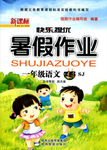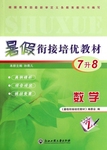题目内容
完形填空
阅读下列短文, 从每篇短文后各题所给的四个选项(A、B、C、D)中,选出可以填入空白处的最佳选项。
No one likes the “old people” smell. No one, not even the ________ people. Trust me, I know.
I volunteer at a hospice of Alzheimer’s Care(老年痴呆患者临终安养院). My health book ________ a pretty picture of hospices, describing them as homes where family members and the sick can work together in ________ incurable illness. It shows pictures of ________ patients speaking to doctors, with, of course, loving ones around them.
That’s ________ what a hospice is. There aren’t family members, only cards sent periodically during the year. The ________ I help seldom smile because they’re struggling to________ where they are, what year it is, ________ their own names.
And they don’t like the “old people” smell—the smell of disease, of medicine and sweat, or of the lost self-respect. They don’t like it. But they ________ in it.
Next week is my ________ . I’m moving soon and I won’t have to________ that hospice. I won’t have to ________ a woman who can’t even close her mouth, or ________ a man who’s crying because he can’t stop shaking ________ enough to tie his shoes. I won’t have to run for a nurse when Evelyn falls out of her wheel-chair.
But I feel far from ________ . After four years of volunteering, the place is the same as the day I started. All the ________ remains fresh, never to be cut through by youthful spirits.
Some visit. Some bring cake and puppy dogs and flowers. But only ________ . When you were born, loving arms held you. Shouldn’t you ________ that way too? Shouldn’t the elderly, who’ve lived their lives, raised their ________ and contributed to society be cared about? Shouldn’t they end feeling loved? Why don’t ________ ?
1.A. oldB. youngC. poorD. sick
2.A. paintsB. writesC. publishesD. reads
3.A. curingB. examiningC. testingD. accepting
4.A. cryingB. sufferingC. fightingD. smiling
5.A. certainlyB. maybeC. notD. hardly
6.A. hospitalsB. patientsC. doctorsD. nurses
7.A. sayB. recognizeC. rememberD. forget
8.A. everB. evenC. onlyD. however
9.A. playB. liveC. talkD. work
10.A. dutyB. turnC. firstD. last
11.A. feelB. seeC. smellD. taste
12.A. feedB. openC. stopD. keep
13.A. blameB. cureC. calmD. find
14.A. fastB. frequentlyC. shortlyD. long
15.A. light-heartedB. absent-mindedC. badD. sad
16.A. hopefulnessB. hopelessnessC. carelessnessD. desire
17.A. someB. fewC. meD. them
18.A. actB. liveC. dieD. speak
19.A. plantsB. childrenC. foodD. money
20.A. IB. weC. theyD. you
 新课标快乐提优暑假作业陕西旅游出版社系列答案
新课标快乐提优暑假作业陕西旅游出版社系列答案 暑假衔接培优教材浙江工商大学出版社系列答案
暑假衔接培优教材浙江工商大学出版社系列答案

